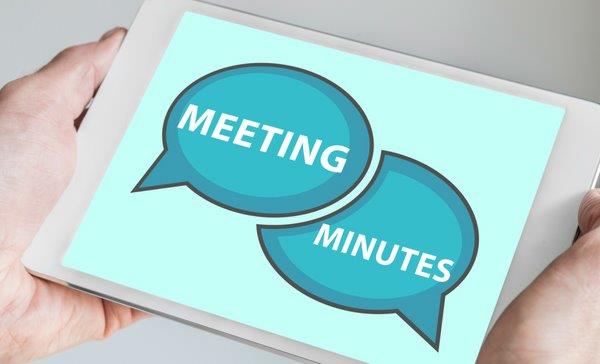
25 Jul Meeting Minutes: The Basics
What are minutes?
Minutes are a formal written record of a meeting.
If you are ever asked to take minutes at a meeting, here’s a few tips to help with this vital business skill:
How to Take Minutes:
- At the start of the meeting, make a note of the date and time as well as who attended and those unable to attend (known as apologies).
- At the start of the meeting, the Chairperson will ask if the minutes of the previous meeting which he/she has tabled have been read by those who attended the previous meeting and that they are happy for him/her to sign them as a true copy.
- Then, the meeting will usually begin with a review of the last meeting’s minutes, in particular, updates on past actions. At this point, make a note of which actions have been completed or are still ongoing.
- Next, the Chairperson will move onto the agenda items. It is not necessary to record discussions word for word. It is more important to listen closely, summarise what was discussed, focus on recording any actions and who is responsible for these.
- Often meetings run over the time allotted and not all agenda items will be covered. In this case, those items are “held over” until the next meeting and this should be recorded in the minutes.
- Finally, make a note of any items that weren’t on the agenda but were discussed in the meeting, known as “new business” or “AOB” (any other business), together with any actions necessary.
Minute-taking takes practice, especially if you are not familiar with the items being discussed. Don’t be embarrassed to ask for clarification if you didn’t hear an important point or if the group moves forward without making a decision and you want to know if this should be recorded in the minutes.
How to Write Minutes:
- Try to write your minutes as soon as possible while the meeting is still fresh in your mind. Prepare a draft as per your notes, using a template if available.
- In your draft, ensure that you include a summary of the discussions and the actions required under each agenda item.
- Minutes require a clear and concise writing style: keep it brief and objective. Don’t forget that they must also be written in the past tense as they are a record of discussions that have already taken place. Only use the future tense when writing about actions to be completed. If possible, take a look at previous minutes to emulate the appropriate writing style.
- Quite often, there may be missing gaps in your notes, making it difficult to finalise your minutes. If this is the case, highlight those sections for your manager to check before completing the final edit and distributing the minutes to all invitees for their records.
Got a question? Send me an email!

